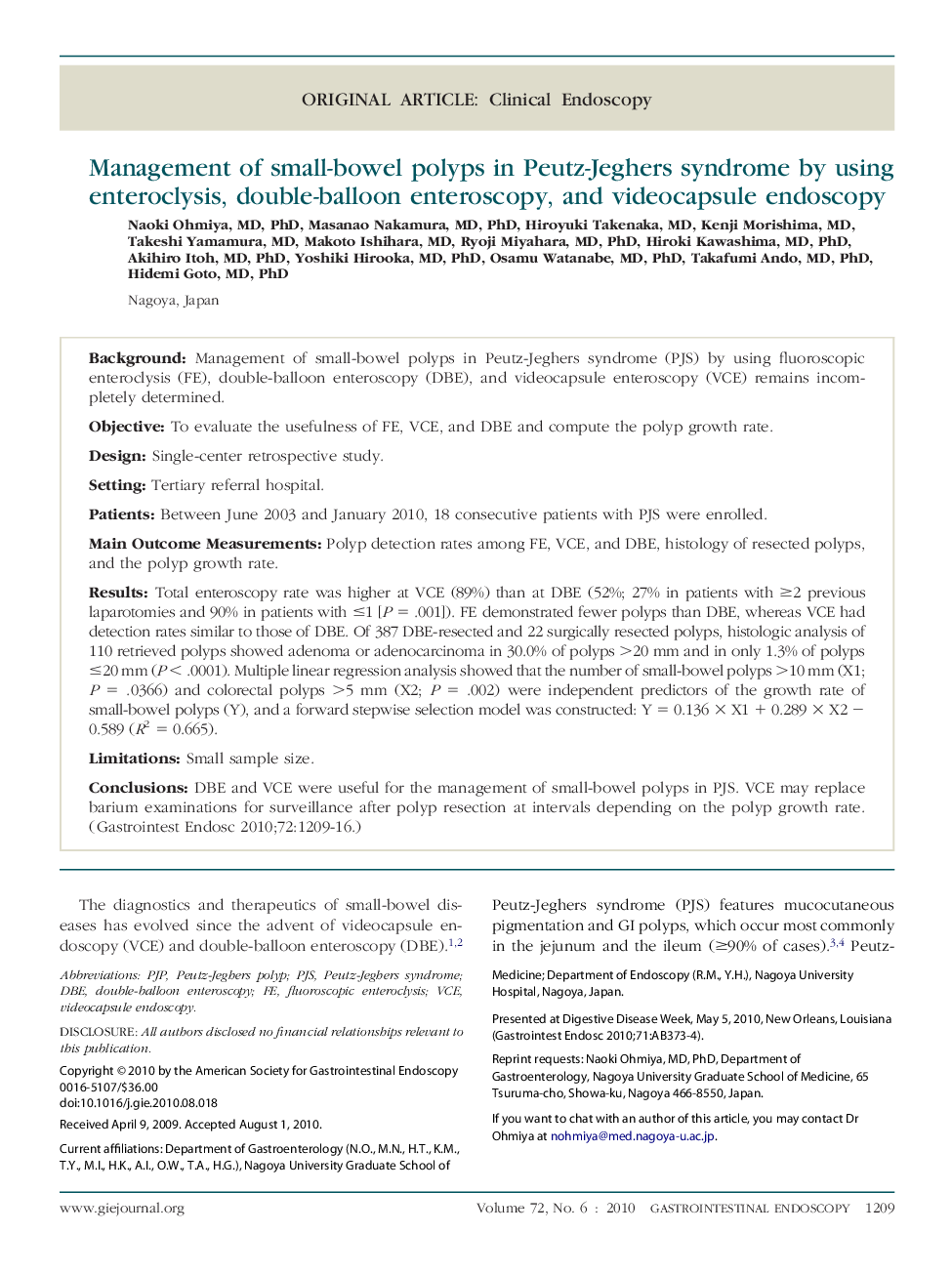| Article ID | Journal | Published Year | Pages | File Type |
|---|---|---|---|---|
| 3306021 | Gastrointestinal Endoscopy | 2010 | 8 Pages |
BackgroundManagement of small-bowel polyps in Peutz-Jeghers syndrome (PJS) by using fluoroscopic enteroclysis (FE), double-balloon enteroscopy (DBE), and videocapsule enteroscopy (VCE) remains incompletely determined.ObjectiveTo evaluate the usefulness of FE, VCE, and DBE and compute the polyp growth rate.DesignSingle-center retrospective study.SettingTertiary referral hospital.PatientsBetween June 2003 and January 2010, 18 consecutive patients with PJS were enrolled.Main Outcome MeasurementsPolyp detection rates among FE, VCE, and DBE, histology of resected polyps, and the polyp growth rate.ResultsTotal enteroscopy rate was higher at VCE (89%) than at DBE (52%; 27% in patients with ≥2 previous laparotomies and 90% in patients with ≤1 [P = .001]). FE demonstrated fewer polyps than DBE, whereas VCE had detection rates similar to those of DBE. Of 387 DBE-resected and 22 surgically resected polyps, histologic analysis of 110 retrieved polyps showed adenoma or adenocarcinoma in 30.0% of polyps >20 mm and in only 1.3% of polyps ≤20 mm (P < .0001). Multiple linear regression analysis showed that the number of small-bowel polyps >10 mm (X1; P = .0366) and colorectal polyps >5 mm (X2; P = .002) were independent predictors of the growth rate of small-bowel polyps (Y), and a forward stepwise selection model was constructed: Y = 0.136 × X1 + 0.289 × X2 − 0.589 (R2 = 0.665).LimitationsSmall sample size.ConclusionsDBE and VCE were useful for the management of small-bowel polyps in PJS. VCE may replace barium examinations for surveillance after polyp resection at intervals depending on the polyp growth rate.
